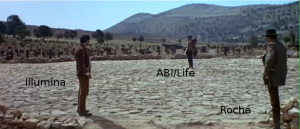
Sequencing War and NextEra Kit
In the previous commentary, we presented a nice and compact review paper on various sequencing technologies with detailed price information. For those without time should be perfectly happy with our review summarized in the following figure, or this 8 minute video -

Illumina currently has the highest backing among researchers especially after their release of HiSeq instruments. SOLiD from ABI/Life has its own group of followers, but they are usually affected by the delay in conversion of programs to color space. However, Life Technologies recognized that problem. The company made its own move by acquiring Ion Torrent and speeding up the release of its low cost sequencer. Illumina followed with MiSeq and Roche/454 brought out its ‘GS Junior’ sequencer.
The above description does not mention other players like (i) Pacific Bio, who is playing like it has 6 aces in its hands, while everyone knows that the deck has only 4, (ii) not so agile array player Agilent, who is surviving by turning sequencing problem into array problem, thanks to exome capture, (iii) potential new surprises from Oxford Nanopore, etc. However, the real battle is between the three players mentioned earlier.
In the Mexican standoff, Illumina made a small and significant move last Nov (2011) by acquiring a company named Epicenter Bio. That company sold a simple and convenient exome capture kit for researchers, and the kit worked well with all kinds of machines including Roche/454. After acquisition, Illumina decided to turn nasty and announced discontinuation of selling NextEra kit for Roche/454 instruments. Roche got so mad that it decided to eat the whole Illumina. That did not go well, and a ‘grapes are sour’ story followed. So, all players are back to the Mexican standoff position again and the pot of gold is sitting at the center.
The above background is to present the context for explaining the significance of NextEra kit. In a detailed early adopter review, CoreGenomics blog presented it as a potential killer app.
The kit helps in simplifying (and reducing cost) of exome capture experiments. These days, everyone is realizing that they cannot cheaply sequence the entire human genome for every individual, and sequencing the coding regions is good for many things they are interested in anyway. But how to get only the coding regions? Exome capture methods uses microarrays to solve that problem, and Roche’s big bet on Nimblegen was potentially to promote that approach. Nextera throws cold water by removing array from the equation, and that cuts many processing steps to make life easy for the biologists. We will write another commentary describing how their method works, but here are two good sources for more information -